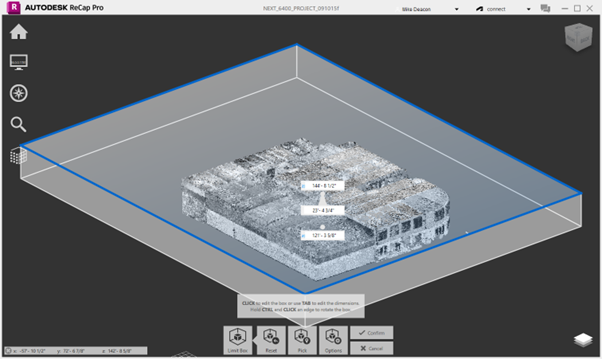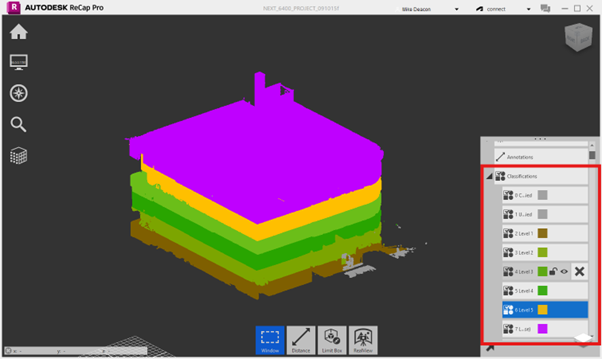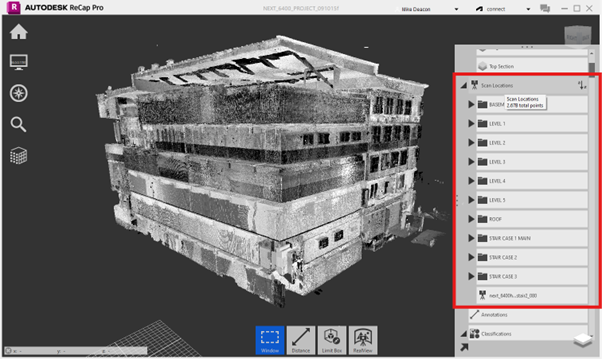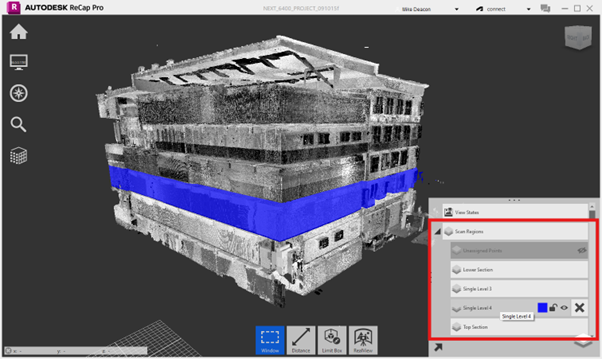Managing Large Data
Scan to Mesh Local can convert large point clouds into meshes using tiling process to ensure that a mesh is never created that is too large to open. The position of these tiles does not take into account the source point cloud, however. As a result, they can end up with extents that span logical areas of the data (such as containing mesh from multiple floors of a building).
The suggested workflows when working with large data is to leverage the tools available in the point cloud to split the data up prior to meshing. This helps to ensure that the default mesh tiles are positioned so the onward workflow can be more efficient.
Limit Box
Use the limit box to mesh a specific area of a model. For example, limit to one floor of a building or a particular object. Adjust the box to desired size and click Save. Only the visible points will be meshed.

Classification Tools
If the cloud data is not classified by some other method, then the manual classification feature can split the point cloud into logical sections.
Once sections are created, enable the visibility for only one of them. Click Save and start scan to mesh.

Scan Locations
Some datasets may be easy to split up by structured scan locations. Group scan locations into logical sections within the Project Navigator.
This workflow only works if the locations of the scans can be obviously grouped. Overlapping meshes may occur if scans from different scan groups overlap.
Once scan location groups are created, enable the visibility for only one of them. Click Save and start scan to mesh.

Regions
Use the point cloud selection tools to select and group sets of points into logical regions.
Once scan region groups are created, enable the visibility for only one of them. Click Save and start scan to mesh.

